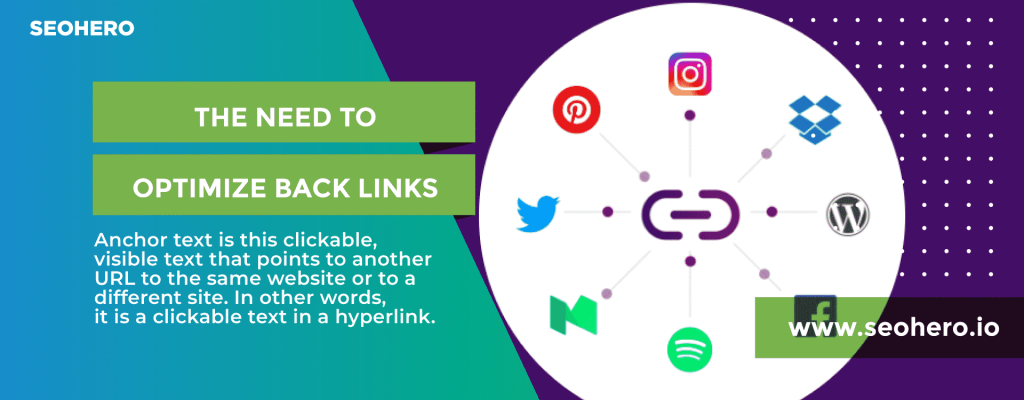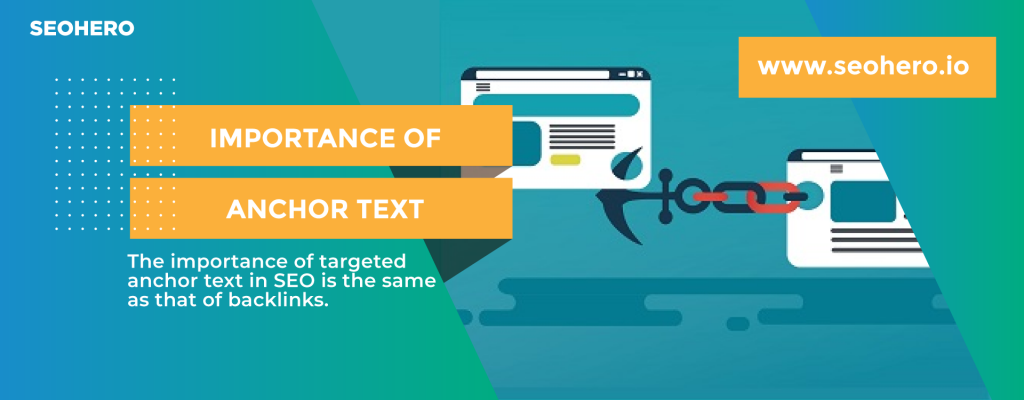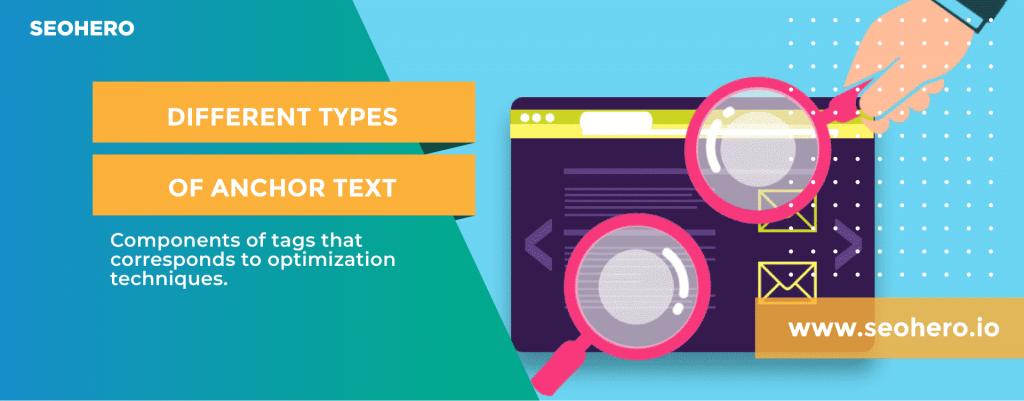Astounding Techniques on why and how to optimize the anchors of your backlinks
We often hear about the optimization of “anchors” in the SEO world, but the notion is not always well understood. In this article, we will discover or rediscover everything related to the anchor text and how you can use it to improve your SEO practices.
What is the definition of an anchor, or anchor text in link building? Anchor text is this clickable, visible text that points to another URL to the same website or to a different site. In other words, it is the clickable text in a hyperlink.

Why is anchor text optimization important?
The importance of targeted anchor text in SEO is the same as that of backlinks. Prior to the Google Penguin update in 2012, anchor text was one of the ways Google ranked a website. It was easy to be ranked in search results with exact anchor text for all your backlinks. But, after the changes in Google’s algorithms, anchor text is considered one of the reasons Google penalizes your website if you do it incorrectly, called over-optimization of anchor text.

After updating Penguin, Google takes the verification of keywords in your anchor text much more seriously. Now, if Google finds a poor-quality website that misuses the anchor text, Google rules. After being penalized, you will lose a significant amount of traffic due to the drop in your rankings. “GoogleBots” can quickly detect which spam websites do not follow the rules. All thanks to their keywords and the tag “title” used as anchor text.
You do not need to create hundreds of links with anchor text to get a higher ranking in the search results. It is large enough to build 5 to 10 links with text composed of your main keywords. Take the example of the article “Realize an effective SEO audit in 15 points “. If I want to be ranked on a keyword such as “SEO audit” on seohero.io then I could use these anchor texts pointing to the article:
• SEO audit guide
• What is an SEO Audit
• How to perform an SEO audit
The different types of anchor texts

1. The exact match An exact match anchor text is the simplest and most powerful type of all anchor texts. This text includes the keyword for which you are trying to optimize your page. For example, a link to a target page about SEO tips includes the keyword “SEO Tips”. The share of the correct anchors must be less than or equal to 1%. Otherwise, you can be penalized by Google.
2. Partial match anchor correspondence
This type of anchor text contains keywords that are similar to the exact match anchor text. The only difference is that it also includes other words. For example, if your exact anchor text is “SEO Tips,” a partial match anchor could be:
• SEO advice guide
• SEO tips for beginners
• SEO tips for bloggers This is the best way to include your target keyword in your anchor text.
3. Brand anchors Link Building
Brand anchors are the anchor text that includes the company name as the link text. For example, “SEO hero helps you choose the best software or service provider for creating, launching or promoting your website. Brand anchors are the safest types of anchor text. But if your domain name already includes some of your keywords, avoid excessive optimization. For example, if your website is “besttoolbox.com and your anchor text is” Best Tool Box “, this can be considered spam and you may be penalized.
4. Bare links
Bare links are the URL of a specific webpage. They contain the hyperlink as the anchor text itself. For example, https://www.seohero.io/ instead of SEOHero.io.
5. Generic anchors
Generic anchors are usually text links that convince people to click. For example:
• Click here
• Click for more information
• Click on this link • Read more
• Show more
6. The keywords LSI
LSI keywords or latent semantic indexing keywords are the variants of your target keywords. LSI anchors are anchor text that is not exactly the same as your target keyword, but they are usually synonyms. To find them, simply type your search keyword on Google and you will get LSI keywords at the bottom of the search page. In the screenshot below, you can see the related search suggestions:
How to optimize the anchors of your backlinks?

Anchor text plays a major role in your search engine ranking of your website. However, many homeowners use anchor texts that are far too optimistic in their linking strategy and are penalized by Google. To avoid this, you must follow best practices for optimizing anchor text. Here are some tips you should follow to optimize your SEO:
Keep relevant anchor texts for your content – The best SEO practice is to keep your anchor text in tune with the rest of your content. The more relevant your anchor text is, the easier it is to rank highly in Google. For example, if your target keyword is “dog food brand,” writing an article on the top 10 brands of dog food in America would be a great idea.
Low Keyword Density – Keyword density is one of the main causes of bad SEO. Many webmasters think it’s a good idea, but having too many keywords ends up throwing your website outside of search results. So, if you want to rank a particular web page, you should avoid creating a lot of links with exact match anchor text.
Avoid links to spam sites – you have probably already heard that “quality is better than quantity”. Having few links to quality websites is much better than having links from a lot of bad sites. These links from spam sites can affect your ranking authority. It is, therefore, best to focus on creating links to authoritative sites, rather than wasting time on others.
Avoid keyword-rich anchors in your internal links – although internal links are strongly encouraged. But creating too many links with the same anchor text can hurt your link. Instead, you should try to create a long anchor text. For example, instead of using “email marketing guide”, look for something like “best guide to learning email marketing”.
Good distribution of anchor text – if you want to get a good ranking on Google, you must have anchor texts well distributed. If your anchor texts are always the same, you will be in trouble very quickly. Here are the percentages of anchor text that you can use to create links to other sites:
• Brand anchor text: 50% • Bare links: 20% • Generic anchors: 5% • LSI: 1-5% • Exact Match Anchor Text: 1-2%
Note: Anchor texts are not an exact science, they vary depending on the domain authority of a website and many other factors.
Write Relevant Guest Articles – Writing a guest article for authoritative blogs is the best way to create a strong link profile. When writing a guest article, you must use LSI anchors and partial matches. Always create content on relevant topics and try to target domains with at least 35 authority.
Conclusion
Anchor texts are a major element in your ranking on search engines. Ignoring this practice increases the risk of penalizing your website. Try to use them as naturally as possible across your entire content feed. Do not build dozens of links at a time.
And, have you noticed any changes in your SEO as a result of an update of your anchor texts? Tell us everything in a comment below.




